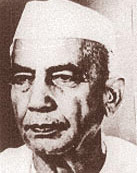

 |  |
 In the meanwhile, the Congress witnessed both a split and a revival. Feeling that Indira Gandhi was not only a spent force but, much worse, a serious political liability, a large number of established Congress leaders, led by Y.B. Chavan and Brahmanand Reddy turned against her. She, in turn, split the party in January 1978, with her wing being known as Congress (I) (for Indira) and the other later, as Congress (U) (for Devraj Urs). In the meanwhile, the Congress witnessed both a split and a revival. Feeling that Indira Gandhi was not only a spent force but, much worse, a serious political liability, a large number of established Congress leaders, led by Y.B. Chavan and Brahmanand Reddy turned against her. She, in turn, split the party in January 1978, with her wing being known as Congress (I) (for Indira) and the other later, as Congress (U) (for Devraj Urs).Thereafter, Indira Gandhi’s political fortunes began to revive and in the February 1978 elections to state assemblies Congress (I) defeated both Janata and the rival Congress in Karnataka and Andhra. There main reason for this revival was the Janata government’s effort to wreak vengeance on Indira Gandhi and punish her for the happenings of the Emergency. Several Commissions of Enquiry—the most famous being the Shah Commission—were appointed to investigate and pinpoint the malpractices, excesses, abuses and atrocities committed by Indira Gandhi and the officials during the Emergency. In 1979, special courts were set up to try her for alleged criminal acts during the Emergency. Also the factional struggle in the Janata government and the party took an acute form in the middle of 1979. Charan Singh, the home minister, had been forced to resign from the Cabinet on 30 June 1978, and, was then, brought back as finance minister in January 1979. He broke up the party and the government in July with the help of the Socialists, who walked out of the party and the government on the refusal of the Jan Sangh members to give up their dual membership of Janata Party and RSS. Having been reduced to a minority, Morarji Desai’s government resigned on 15 July. A week later, Charan Singh formed the government in alliance with the Chavan-wing of the Congress (U) and some of the Socialists and with the outside support of Cong (I) and CPI. But he never got to face the parliament as, on 20 August, a day before the confidence vote, Indira Gandhi withdrew her support after Charan Singh rejected her demand for the scrapping of special courts set up to prosecute her. On Charan Singh’s advice, the President dissolved the Lok Sabha and announced mid-term elections. The elections, held in January 1980, were fought primarily between Cong (I), Cong (U), Lok Dal, the new party floated by Charan Singh and Socialists, and Janata, now consisting primarily of Jan Sangh and a handful of old Congressmen such as Jagjivan Ram and Chandra Shekhar, CPM and CPI were not in the picture except in West Bengal and Kerala. Having been disenchanted with Janata’s non-governance, lack of vision and incessant mutual quarrels, the people once again turned to Congress under Indira Gandhi, perceiving her Congress to be the real Congress. The Janata Party’s main appeal consisted of warnings against the threat to democracy and civil liberties if Indira Gandhi came back to power. Charan Singh talked of ‘peasant raj’. Indira Gandhi concentrated on Janata's non-governance. After the elections, Janata Party split once again, with the old Jan Sangh leaders leaving it to form the Bharatiya Janata Party at the end of 1980 and Jagjivan Ram joining Cong (U). |
Copyright ©2000 indiansaga.info. All rights reserved.
By using this service, you accept that you won't copy or use the data given in this website for any commercial purpose.
The material on indiansaga.info is for informational & educational purpose only.
This site is best viewed at 800 X 600 picture resolution.